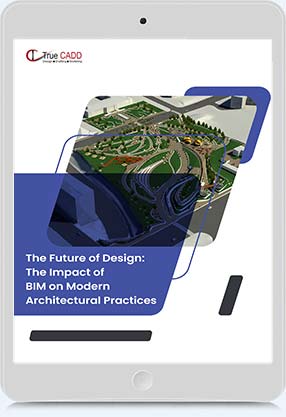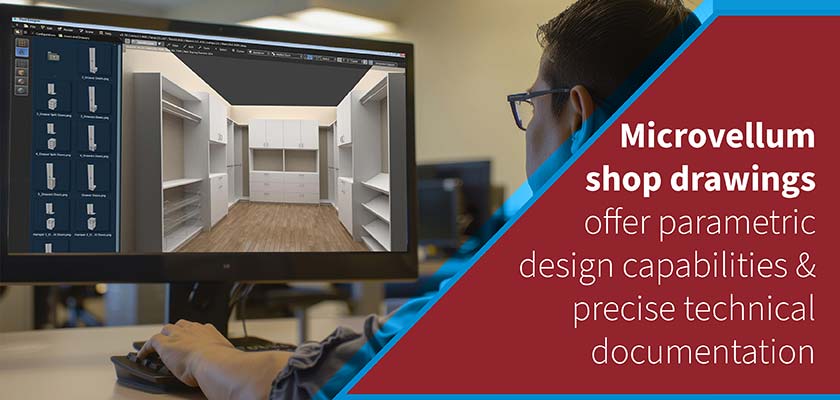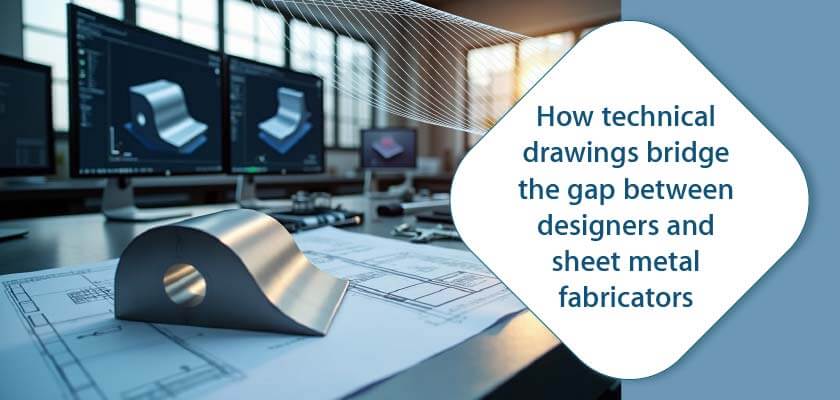BIM services provide AEC firms with clash detection, 3D visualization, and information-rich 3D models. Using connected BIM workflows and tools helps small AEC firms reduce rework, increase project efficiency, and generate cost savings,leading to more clients.
info@truecadd.com
How BIM services offer a technology edge to small AEC firms
Table of Contents
Small AEC firms often have limited resources, making it tough to compete with larger firms that have already adopted BIM. Traditional or disconnected tools and workflows can lead to errors, miscommunication, and rework, resulting in cost overruns and project delays. Without BIM, smaller AEC companies might struggle to achieve comprehensive project visualization, potentially causing BIM coordination and clashes when onsite work starts.
In 2003, architectural firms would spend 7%-8% of their expenses on marketing activities.
Source: architecturequote.comImplementing BIM services can be a game changer for smaller AEC firms. It provides centralized model access and quick communication and reduces misinterpretations. BIM detects and resolves construction clashes during the preconstruction stage. With interference detection tools like Navisworks, stakeholders can identify and resolve inter disciplinary clashes during the design phase, saving time, money, and resources. Extracting quantities and cost estimates from a coordinated, error-free, and information-rich 3D model allows for accurate bidding and budgeting, minimizing financial risks.
In the present AEC landscape, smaller AEC companies need to adopt BIM workflows and tools to stay visible, relevant, and profitable. The use of BIM not only improves efficiency but provides a significant difference in deliverable quality. This brings greater client satisfaction and recurring business to drive expansion and growth.
The Smart Market Report reveals a significant gap in BIM experience: while 44% of small firms are relatively new to BIM (1-2 years of experience), only 13% of large firms fall into this category, suggesting that larger firms have generally been quicker to adopt and integrate BIM into their workflows.
Source: architecturequote.comReduce rework before construction by 50% with BIM.
Contact our BIM experts →Can BIM for small AEC firms level the playing field?
Small AEC firms face distinct challenges in an industry dominated by large players. Limited resources and budgets make it difficult to handle complex projects that require advanced tools, hindering the performance of smaller AEC companies. Without access to BIM tools, these firms risk missing out on opportunities, leading to reworks and lower profit margins.
BIM has become a standard tool in the AEC industry, with over 98% of large architectural firms and a growing number of smaller firms (over 30%) integrating it into their design processes for modeling and documentation.
Source: agacad.comBIM services provide smaller firms with the tools to compete with larger companies and level the playing field. The collaborative nature of 3D modeling, clash detection capabilities, and an information-rich environment support these firms with seamless workflows, greater project accuracy, and a significant reduction in costly errors. These factors contribute to a stronger bottom line and ensure sustainable success.
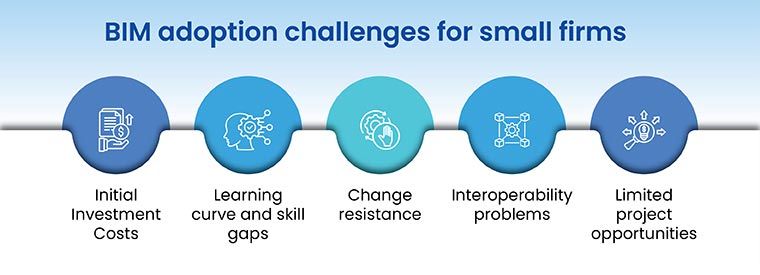
7 Benefits of BIM for small AEC firms
1. Facilitates time savings by cutting-back on feedback loops
BIM streamlines communication and makes design iterations more productive. It uses a centralized 3D model that multiple project participants can access in realtime. BIM coordination services reduce the need for time-consuming feedback loops and leads to faster decisionmaking and efficient project scheduling.
2. Markets your firm effectively
3D BIM models enable powerful and immersive visualization, allowing smaller firms to showcase their expertise and capabilities to clients. Interactive 3D presentations and virtual walkthroughs leave a lasting impression, making them strong contenders in a competitive market.
3. Makes your firm resilient
BIM’s adaptability to changing project needs allows for the creation of efficient prototypes and faster responses to unexpected challenges. This agility within BIM workflows and tools like Revit, Navisworks, Dynamo, and BIM360 helps navigate obstacles, minimize delays, and keep up the project momentum.
A project management firm saves construction time by adopting BIM
A Saudi Arabian project management firm partnered with TrueCADD on a healthcare construction project. They needed modeling of elements as constructed assemblies for maintenance and operations along with material takeoffs, so that they could complete construction as per tender deadlines.
TrueCADD’s engineers developed a highly detailed 3D BIM model (LOD 500) using Autodesk Revit architecture, structure and Navisworks, which streamlined construction processes, optimized scheduling, minimized rework, accelerated project completion, and ultimately increased the return on investment.
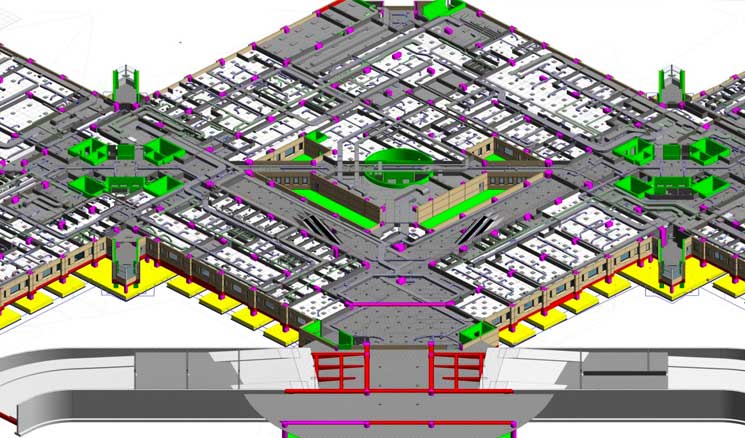
4. Ensures quality to foster trust and secure higher repeat footfalls
BIM reduces design errors and builds accuracy using automation processes and clash detection. This results in high-quality deliverables that build trust and reliability,increasing the likelihood of repeat business.
Optimize your project workflows with Revit automation services.
Connect with our Design Automation Expert →5. Provides capabilities to gain a competitive edge
Building information modeling (BIM) equips smaller companies with connected workflows and advanced tools that were once used only by larger firms. This facilitates superior design solutions supported by higher efficiency and cost savings to attract more client footfalls.
6. Makes small firms market disruptors
Small firms using BIM become market disruptors by moving away from traditional 2D drawings. Embracing BIM’s full capabilities across the entire project lifecycle—including planning, design, construction,renovations, and facilities management—helps smaller firms provide end-to-end BIM services and compete with established firms.
Architectural firm improves design intent with 4D BIM model
An architectural firm from Manchester, UK, outsourced its requirements to TrueCADD for 4D BIM deliverables for a mixed-use construction project. The team at TrueCADD generated a coordinated and clash-free 4D model using Revit® and Navisworks® in two months to improve design intent. The firm was able to share accurate deliverables with its clients in a timely manner. Reduced reworks further saved construction costs.
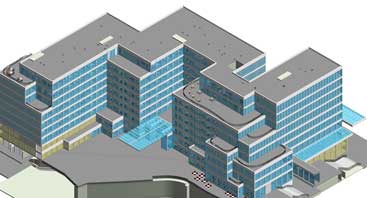 Architectural BIM Model mixed use Building
Architectural BIM Model mixed use Building
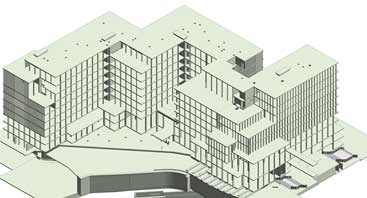 Structural BIM Model mixed use building
Structural BIM Model mixed use building
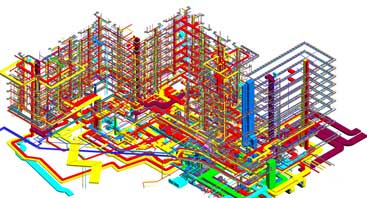 MEP BIM Model mixed use building
MEP BIM Model mixed use building
7. Wins more bids to secure new businesses
Information-rich BIM models provide valuable insights for accurate scheduling (4D) and cost estimation (5D) strengthening proposals and increasing the chances of winning bids. The ability to design and present precise project plans and immersive visualizations gives a competitive advantage, helping small firms secure new clients and improve project margins.
58% BIM users report a significant reduction in overall project duration.
Source: nrc-publications.canada.ca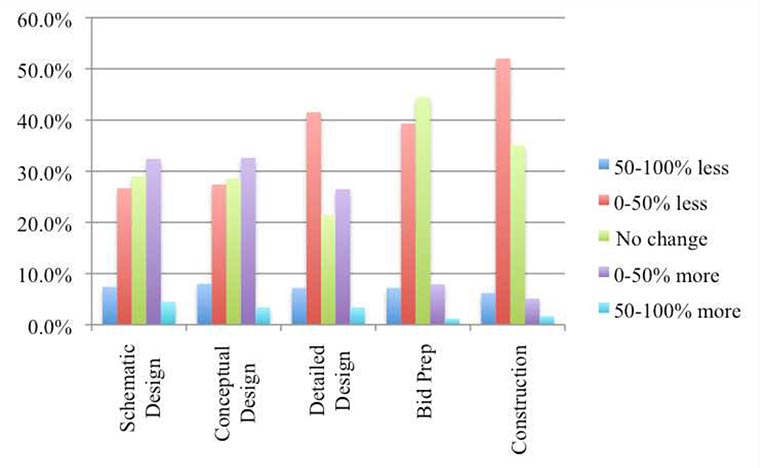
3D modeling for construction: 5 key questions on BIM’s ROI
Recent studies reveal a shift in the AEC industry as small firms continue to adopt BIM at a faster pace. While large firms have already adopted BIM, over 30% of smaller companies are using BIM to model and document projects, which shows recognition of its advantages to improve competitiveness for architects, engineers, contractors, and other stakeholders.
How can BIM help small AEC firms compete with larger AEC firms?
BIM provides small firms with tools like Revit, Navisworks, and other platforms to create 3D models, detect clashes, and leverage a data-rich environment. This improves efficiency, lowers errors, and ensures high-quality project deliverables.
What are the cost advantages of implementing BIM for small firms?
BIM lowers rework and mitigates material waste based on precise modeling and clash detection,which leads to cost savings. Moreover, BIM creates seamless workflows and enhances communication,which results in quick project delivery and reduction in labor costs.
Can BIM improve client satisfaction within small AEC firms?
Absolutely! BIM helps participants with better communication and client transparency based on visual models in 3D space. It ensures alignment with project intent and client needs and reduces misunderstandings, leading to greater client satisfaction and robust relationships.
Is BIM a long-term investment for smaller AEC companies?
Yes! BIM has become an industry standard for every firm, including SMBsto adopt this technology. These firms are better set in the long run. BIM supports companies in staying competitive, adapting to evolving project and client needs, and recruiting top talent.
How much does BIM software cost?
BIM does incur upfront costs, but it’s the long-term dividends that matter. Although BIM software may seem expensive initially, and the cost may even run in thousands of dollars, with the various features and host of benefits that it offers, the investment is totally worth it.
Transform Your Architectural Projects with BIM
Discover how Building Information Modeling (BIM) is revolutionizing design, collaboration, and project delivery in architecture.
Why Download This Whitepaper?
- Stay Competitive: Learn how BIM helps secure complex, high-profile projects.
- Maximize Efficiency: Reduce errors, rework, and costs with smarter workflows and predictive insights.
- Drive Client Satisfaction: Deliver immersive 3D visualizations and ensure compliance with local and international regulations.
- Explore the Future of Architecture: Prepare for the integration of AI, IoT, and advanced analytics into your workflows.
Stay ahead in the competitive world of architecture.
Grab Your Copy Today!BIM workflows for small projects
Small AEC firms can benefit greatly from using explorative design prototypes and 3D models to speed up project approvals. With that in mind, we’ve have identified the key steps that can expedite the adoption process and lead the change.
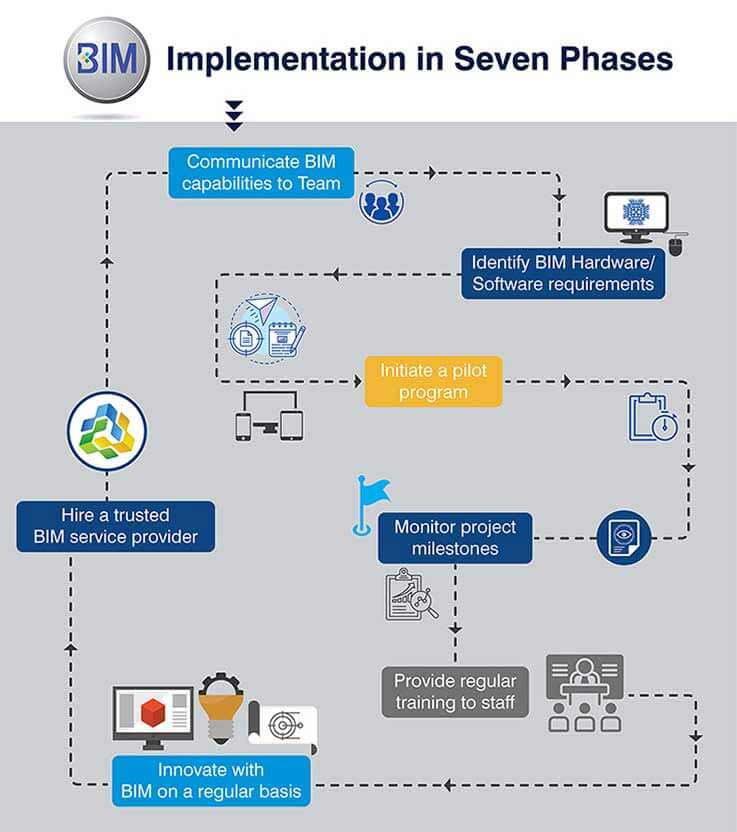
Future trends in BIM for small AEC firms
The future of BIM for small AEC firms centers on utilizing prebuilt cloud-based platforms for seamless BIMcollaboration and information management. Embracing AR and VR tools for immersive visualization and using AI for task automation enhances efficiency. Leveraging modular construction and prefabrication workflows optimizes project delivery.
Integrating Building Information Modeling (BIM) with IoT and GIS will fuel information-driven decision-making for architects while focusing on energy analysis tools and sustainability to meet evolving demands. Cloud-based platforms, mobile applications, and AI-powered automation streamline workflows, enable real-time collaboration, and automate repetitive tasks that result in lower errors, productivity reduction, and improved project outcomes.
Breaking down barriers for small AEC firms with BIM
Advancements in new processes and tools provide small AEC firms with access to cutting-edge technology. These solutions remove the need for costly infrastructure and proprietary software licenses that enable small AEC firms to utilize BIM’s full potential without significant CapEx.
Conclusion
Smaller AEC firms face pressures to keep up with larger players in a fast-paced industry, and while BIM adoption poses various roadblocks, it improves client relationships and helps build long-term success. Once small firms understand BIM’s capabilities to boost efficiency and project results, they can utilize it to enhance designs, expedite construction, achieve construction precision, and maximize the ROI for their services.
Streamline your projects and boost efficiency with our BIM services.
Need help on an ongoing basis?
We establish long term business relationships with clients and are committed to total customer satisfaction.

